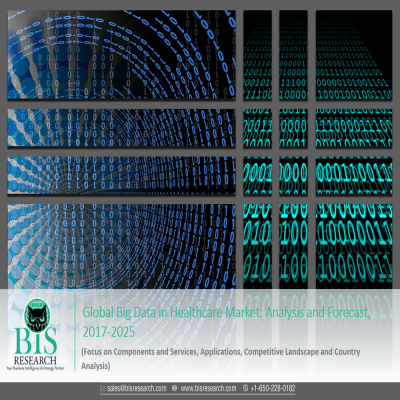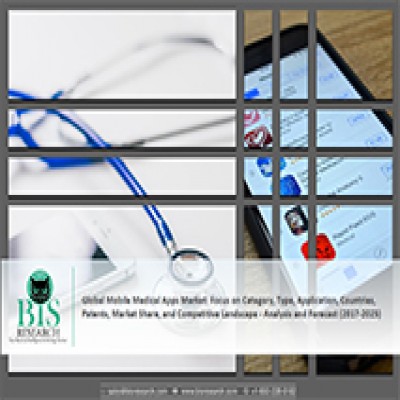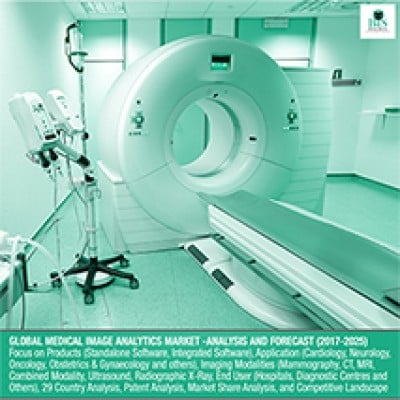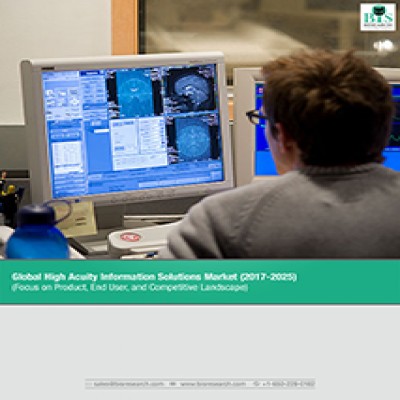A quick peek into the report
Table of Contents
3.1 Research Methodology
4.1 Industry Trends
4.2 Regulatory Framework
4.2.1 Regulatory Framework in North America
4.2.2 Regulatory Framework in Europe
4.3 Patent Analysis
5.1 Market Share Analysis
5.2 Key Developments and Strategies
5.2.1 Collaboration and Partnerships
5.2.2 Mergers and Acquisitions
5.2.3 Product Launches
5.2.4 Others (Contracts and Awards)
5.2.5 Funding
5.3 Product Mapping Analysis
5.4 Business Model Analysis
6.1 Market Drivers
6.1.1 Increasing Adoption of EHR
6.1.2 Increased Focus on Personalized Care
6.1.3 Increasing Healthcare Expenditure
6.1.4 Government Initiatives
6.1.5 Increasing Funding Activities
6.2 Restraints
6.2.1 Lack of National Patient Identifier
6.2.2 Monopolization of EHR Industry
6.2.3 Lack of Regulations
6.3 Opportunities
6.3.1 Improving Healthcare Infrastructure in Developing Economies
6.3.2 Integration of Blockchain Technology in Interoperability
6.3.3 Medical Device Interoperability
7.1 Overview
7.2 Software
7.2.1 EHR Interoperability Solutions
7.2.2 Laboratory Information Management System (LIMS) Interoperability Solutions
7.2.3 HIE Interoperability Solutions
7.2.4 Enterprise Interoperability Solutions
7.2.5 Other (Imaging Interoperability Solutions)
7.3 Services
8.1 Overview
8.2 Cloud-Based Model
8.3 On Premise Model
9.1 Overview
9.2 Foundational Interoperability
9.3 Structural Interoperability
9.4 Semantic Interoperability
10.1 Overview
10.2 Patients
10.3 Providers
10.3.1 Hospitals and Clinics
10.3.2 Long Term Care Centers
10.3.3 Diagnostic and Imaging Centers
10.4 Payers
10.5 Pharmacies
11.1 Overview
11.2 North America
11.2.1 U.S.
11.2.2 Canada
11.3 Europe
11.3.1 Germany
11.3.2 France
11.3.3 U.K.
11.3.4 Spain
11.3.5 Italy
11.3.6 Rest-of-Europe
11.4 Asia-Pacific
11.4.1 China
11.4.2 Japan
11.4.3 South Korea
11.4.4 India
11.4.5 Australia
11.4.6 Rest-of-Asia-Pacific
11.5 Rest-of-the-World
11.5.1 Brazil
11.5.2 Mexico
11.5.3 Saudi Arabia
11.5.4 Israel
11.5.5 UAE
11.5.6 Rest-of-Rest-of-the-World
11.5.6.1 Colombia
11.5.6.2 South Africa
11.5.6.3 Kenya
12.1 Allscripts Healthcare Solutions, Inc.
12.1.1 Company Overview
12.1.2 Role of Allscripts Healthcare Solutions, Inc. in the Global Interoperability Solutions in Healthcare Market
12.1.3 Product Offerings
12.1.4 Financials
12.1.5 Key Insights about Financial Health of the Company
12.1.6 Recent Developments
12.1.7 SWOT Analysis
12.2 Cerner Corporation
12.2.1 Company Overview
12.2.2 Role of Cerner Corporation in the Global Interoperability Solutions in Healthcare Market
12.2.3 Product Offerings
12.2.4 Financials
12.2.5 Key Insights about Financial Health of the Company
12.2.6 Recent Developments
12.2.7 SWOT Analysis
12.3 Dell Technologies Inc.
12.3.1 Company Overview
12.3.2 Role of Dell Technologies Inc in the Global Interoperability Solutions in Healthcare Market
12.3.3 Product Offerings
12.3.4 Financials
12.3.5 Key Insights about the Financial Health of the Company
12.3.6 Recent Developments
12.3.7 SWOT Analysis
12.4 Epic Systems Corporation.
12.4.1 Company Overview
12.4.2 Role of Epic Systems Corporation. in the Global Interoperability Solutions in Healthcare Market
12.4.3 Product Offerings
12.4.4 Recent Developments
12.4.5 SWOT Analysis
12.5 General Electric Company (GE)
12.5.1 Company Overview
12.5.2 Role of GE in Global Interoperability Solutions in Healthcare Market
12.5.3 Product Offerings
12.5.4 Financials
12.5.5 Key Insights about Financial Health of the Company
12.5.6 Recent Developments
12.5.7 SWOT Analysis
12.6 International Business Machines Corporation (IBM)
12.6.1 Company Overview
12.6.2 Role of IBM in the Global Interoperability Solutions in Healthcare Market
12.6.3 Product Offering
12.6.4 Financials
12.6.5 Key Insights about Financial Health of the Company
12.6.6 Recent Development
12.6.7 SWOT Analysis
12.7 Infor
12.7.1 Company Overview
12.7.2 Role of Infor in the Global Interoperability Solutions in Healthcare Market
12.7.3 Product Offerings
12.7.4 Recent Developments
12.7.5 SWOT Analysis
12.8 iNTERFACEWARE Inc.
12.8.1 Company Overview
12.8.2 Role of iNTERFACEWARE Inc. in the Global Interoperability Solutions in Healthcare Market
12.8.3 Product Offerings
12.8.4 Recent Developments
12.8.5 SWOT Analysis
12.9 InterSystems Corporation
12.9.1 Company Overview
12.9.2 Role of InterSystems Corporation in the Global Interoperability Solutions in Healthcare Market
12.9.3 Product Offerings
12.9.4 Recent Developments
12.9.5 SWOT Analysis
12.10 Jitterbit
12.10.1 Company Overview
12.10.2 Role of Jitterbit in the Global Interoperability Solutions in Healthcare Market
12.10.3 Product Offerings
12.10.4 Recent Developments
12.10.5 SWOT Analysis
12.11 Koninklijke Philips N.V.
12.11.1 Company Overview
12.11.2 Role of Koninklijke Philips N.V. in the Global Interoperability Solutions in Healthcare Market
12.11.3 Product Offerings
12.11.4 Financials
12.11.5 Key Insights about Financial Health of the Company
12.11.6 Recent Developments
12.11.7 SWOT Analysis
12.12 Medical Information Technology, Inc. (MEDITECH)
12.12.1 Company Overview
12.12.2 Role of Meditech in the Global Interoperability Solutions in Healthcare Market
12.12.3 Product Offerings
12.12.4 Financials
12.12.5 Recent Developments
12.12.6 SWOT Analysis
12.13 NextGen Healthcare, Inc.
12.13.1 Company Overview
12.13.2 Role of NextGen Healthcare, Inc. in the Global Interoperability Solutions in Healthcare Market
12.13.3 Product Offerings
12.13.4 Financials
12.13.5 Key Insights about Financial Health of the Company
12.13.6 Recent Developments
12.13.7 SWOT Analysis
12.14 Omnicell, Inc.
12.14.1 Company Overview
12.14.2 Role of Omnicell, Inc in the Global Interoperability Solutions in Healthcare Market
12.14.3 Product Offerings
12.14.4 Financials
12.14.5 Key Insights about Financial Health of the Company
12.14.6 Recent Development
12.14.7 SWOT Analysis
12.15 ViSolve Inc.
12.15.1 Company Overview
12.15.2 Role of ViSolve Inc. in the Global Interoperability Solutions in Healthcare Market
12.15.3 Product Offerings
12.15.4 Recent Developments
12.15.5 SWOT Analysis
12.16 Company Snapshots
12.16.1 CareTech Solutions, Inc.
12.16.1.1 Company Overview
12.16.1.2 Role of CareTech Solutions, Inc. in the Global Interoperability Solutions in Healthcare Market
12.16.2 eMids Technologies Inc.
12.16.2.1 Company Overview
12.16.2.2 Role of eMids Technologies Inc. in the Global Interoperability Solutions in Healthcare Market
12.16.3 Mobisoft Infotech LLC
12.16.3.1 Company Overview
12.16.3.2 Role of Mobisoft Infotech LLC in the Global Interoperability Solutions in Healthcare Market
12.16.4 MphRx Inc.
12.16.4.1 Company Overview
12.16.4.2 Role of MphRx Inc in the Global Interoperability Solutions in Healthcare Market
12.16.5 Orion Health
12.16.5.1 Company Overview
12.16.5.2 Role of Orion Health in the Global Interoperability Solutions in Healthcare Market
12.16.6 OSP Labs
12.16.6.1 Company Overview
12.16.6.2 Role of OSP Labs in the Global Interoperability Solutions in Healthcare Market
Table 1: Interoperability Solutions, Types and Providers
Table 2: Platform Providers
Table 4.1: Regulatory Framework/Acts/Policies for Interoperability Solutions in Healthcare in North America
Table 4.2: Regulatory Framework/Acts/Policies for Interoperability Solutions in Healthcare in Europe
Table 6.1: Government Initiatives for Interoperability
Table 6.2: Funding Activities, 2017-2019
Table 7.1: Companies Offering EHR Interoperability Solutions
Table 7.2: Companies Offering LIMS Interoperability Solutions
Table 7.3: Companies Offering HIE Interoperability Solutions
Table 7.4: Companies Offering Enterprise Interoperability Solutions
Table 7.5: Companies Offering Imaging Interoperability Solutions
Table 7.6: Service Provider Companies
Table 10.1: Interoperability Solutions Used in Hospitals and Clinics
Table 10.2: Solutions Used in Diagnostic and Imaging Centres
Table 11.1: Rest-of-Europe Countries and Their Market Share ($ Million), 2018-2025
Figure 1: Roadmap for Interoperability
Figure 2: Timelines for Interoperability Implementation
Figure 3: Global Interoperability Solutions in Healthcare Market, 2018-2025
Figure 4: Testing and Development Costs for Interoperability Solutions, 2018-2025
Figure 5: Epic and Cerner’s Approaches to Interoperability
Figure 6: Market Drivers and Restraints
Figure 7: Market Share of Different Regions, 2019-2025
Figure 1.1: Different Levels of Interoperability
Figure 2.1: Global Interoperability Solutions in Healthcare: Market Segmentation
Figure 3.1: Global Interoperability Solutions in Healthcare Market Methodology
Figure 3.2: Primary Research
Figure 3.3: Secondary Research
Figure 3.4: Data Triangulation
Figure 3.5: Bottom-Up Approach (Segment-Wise Analysis)
Figure 3.6: Assumptions and Limitations
Figure 3.7: Factors Considered for Data Prediction and Modeling
Figure 4.1: Industry Trends, Global Interoperability Solutions in Healthcare Market
Figure 4.2: Patent Analysis, Interoperability Solutions in Healthcare Market
Figure 5.1: Global Market Share Analysis, Within the Same Type of Healthcare System Within the Same System, 2018
Figure 5.2: Global Market Share Analysis, Within Different Types of Healthcare System, 2018
Figure 5.3: Share of Key Developments and Strategies
Figure 5.4: Collaborations and Partnerships Share (by Companies)
Figure 5.5: Mergers and Acquisitions (by Companies)
Figure 5.6: Product Launches (by Companies)
Figure 5.7: Contracts and Awards (by Organizations and Individuals)
Figure 5.8: Funding Share (by Companies)
Figure 5.9: Product Mapping Analysis- Global Interoperability Solutions in Healthcare Market
Figure 6.1: EHR Adoption in the U.S. by Specialty, 2014
Figure 6.2: Healthcare Expenditure, $Trillion, 2013-2018
Figure 6.3: EHR Industry Vendor Share
Figure 6.4: Savings Pertaining to Medical Device Interoperability
Figure 7.1: Global Interoperability Solutions (By Component)
Figure 7.2: Global Interoperability Solutions in Healthcare Market (Software), 2018-2025
Figure 7.3: EHR Interoperability Solutions, 2018-2025
Figure 7.4: LIMS Interoperability Solutions, 2018-2025
Figure 7.5: HIE Interoperability Solutions, 2018-2025
Figure 7.6: Inter-Relationship Between HIE and Interoperability
Figure 7.7: Enterprise Interoperability Solutions, 2018-2025
Figure 7.8: Imaging Interoperability Solutions, 2018-2025
Figure 7.9: Global Interoperability Solutions in Healthcare Market (Services), 2018-2025
Figure 8.1: Advantages of Cloud-Based Deployment Model
Figure 8.2: Global Interoperability Solutions in Healthcare Market (Cloud), 2018-2025
Figure 8.3: Global Interoperability Solutions in Healthcare Market (On-Premise), 2018-2025
Figure 9.1: Different Levels of Interoperability
Figure 9.2: Adoption Rate of Interoperability Levels
Figure 9.3: Global Interoperability Solutions in Healthcare Market (Foundational Interoperability), 2018-2025
Figure 9.4: Global Interoperability Solutions in Healthcare Market (Structural Interoperability), 2018-2025
Figure 9.5: Global Interoperability Solutions in Healthcare Market (Semantic Interoperability), 2018-2025
Figure 10.1: Global Interoperability Solutions (By End User)
Figure 10.2: Global Interoperability Solutions in Healthcare Market (Patients), 2018-2025
Figure 10.3: Different Care Providers in Healthcare
Figure 10.4: Global Interoperability Solutions in Healthcare Market (Providers), 2018-2025
Figure 10.5: Adoption of Interoperability, Post-Acute Care Hospitals, 2014-2017
Figure 10.6: Global Interoperability Solutions in Healthcare Market (Payers), 2018-2025
Figure 10.7: Global Interoperability Solutions in Healthcare Market (Pharmacies), 2018-2025
Figure 11.1: Interoperability Market Across Regions, 2018 and 2025
Figure 11.2: North America Interoperability Solutions in Healthcare Market, 2018-2025
Figure 11.3: Factors Influencing Interoperability Solutions in Healthcare Market in North America
Figure 11.4: U.S. Interoperability Solutions in Healthcare Market, 2018-2025
Figure 11.5: Factors Affecting Adoption of Interoperability in the U.S.
Figure 11.6: Canada Interoperability Solutions in Healthcare Market, 2018-2025
Figure 11.7: Canadian Healthcare System
Figure 11.8: Europe Interoperability Solutions in Healthcare Market, 2018-2025
Figure 11.9: Factors Influencing Interoperability Solutions in Healthcare Market in Europe
Figure 11.10: Germany Interoperability Solutions in Healthcare Market, 2018-2025
Figure 11.11: France Interoperability Solutions in Healthcare Market, 2018-2025
Figure 11.12: U.K. Interoperability Solutions in Healthcare Market, 2018-2025
Figure 11.13: Spain Interoperability Solutions in Healthcare Market, 2018-2025
Figure 11.14: Italy Interoperability Solutions in Healthcare Market, 2018-2025
Figure 11.15: Rest-of-Europe Interoperability Solutions in Healthcare Market, 2018-2025
Figure 11.16: Asia-Pacific Interoperability Solutions in Healthcare Market, 2018-2025
Figure 11.17: Factors Influencing Interoperability Solutions in Healthcare Market in Asia-Pacific
Figure 11.18: China Interoperability Solutions in Healthcare Market, 2018-2025
Figure 11.19: Japan Interoperability Solutions in Healthcare Market, 2018-2025
Figure 11.20: South Korea Interoperability Solutions in Healthcare Market, 2018-2025
Figure 11.21: India Interoperability Solutions in Healthcare Market, 2018-2025
Figure 11.22: Australia Interoperability Solutions in Healthcare Market, 2018-2025
Figure 11.23: Singapore Interoperability Solutions in Healthcare Market, 2018-2025
Figure 11.24: Rest-of-Asia-Pacific Interoperability Solutions in Healthcare Market, 2018-2025
Figure 11.25: Rest-of-the-World Interoperability Solutions in Healthcare Market, 2018-2025
Figure 11.26: Factors Influencing Interoperability Solutions in Healthcare Market in Middle East and Rest-of-the-World
Figure 11.27: Brazil Interoperability Solutions in Healthcare Market, 2018-2025
Figure 11.28: Mexico Interoperability Solutions in Healthcare Market, 2018-2025
Figure 11.29: Saudi Arabia Interoperability Solutions in Healthcare Market, 2018-2025
Figure 11.30: Israel Interoperability Solutions in Healthcare Market, 2018-2025
Figure 11.31: UAE Interoperability Solutions in Healthcare Market, 2018-2025
Figure 11.32: Other Countries Interoperability Solutions in Healthcare Market, 2018-2025
Figure 12.1: Allscripts Healthcare Solutions: Interoperability Solutions
Figure 12.2: Allscripts Healthcare Solutions, Inc.: Overall Financials, 2016-2018
Figure 12.3: Allscripts Healthcare Solutions, Inc.: Revenue (by Segment), 2016-2018
Figure 12.4: Allscripts Healthcare Solutions, Inc.: Revenue (by Region), 2016-2018
Figure 12.5: Allscripts Healthcare Solutions, Inc.: R&D Expenditure, 2016-2018
Figure 12.6: Cerner Corporation: Interoperability Solutions
Figure 12.7: Cerner Corporation: Overall Financials, 2016-2018
Figure 12.8: Cerner Corporation.: Revenue (by Segment), 2016-2018
Figure 12.9: Cerner Corporation.: Revenue (by Region), 2016-2018
Figure 12.10: Cerner Corporation: R&D Expenditure, 2016-2018
Figure 12.11: Dell Boomi: Interoperability Solution
Figure 12.12: Dell Technologies Inc.: Overall Financials, 2017-2019
Figure 12.13: Dell Technologies Inc.: Revenue (by Segment), 2017-2019
Figure 12.14: Dell Technologies Inc.: Revenue (by Region), 2017-2019
Figure 12.15: Dell Technologies Inc.: R&D Expenditure, 2017-2019
Figure 12.16: Epic Systems Corporation: Interoperability Solutions
Figure 12.17: GE: Interoperability Solutions
Figure 12.18: GE: Overall Financials, 2016-2018
Figure 12.19: GE.: Revenue (by Segment), 2016-2018
Figure 12.20: GE.: Revenue (by Sub-Segment), 2016-2018
Figure 12.21: GE: Revenue (by Product Type), 2016-2018
Figure 12.22: GE: Revenue (by Region), 2016-2018
Figure 12.23: GE.: R&D Expenditure, 2016-2018
Figure 12.24: IBM: Interoperability Solutions
Figure 12.25: IBM: Overall Financials, 2016-2018
Figure 12.26: IBM: Revenue (by Segment), 2016-2018
Figure 12.27: IBM: Revenue (by Region), 2016-2018
Figure 12.28: IBM: R&D Expenditure, 2016-2018
Figure 12.29: Infor: Interoperability Solution
Figure 12.30: iNTERFACEWARE Inc: Interoperability Solutions
Figure 12.31: InterSystems Corporation: Interoperability Solutions
Figure 12.32: Jitterbit: Interoperability Solutions
Figure 12.33: Koninklijke Philips N.V.: Interoperability Solution
Figure 12.34: Koninklijke Philips N.V.: Overall Financials, 2016-2018
Figure 12.35: Koninklijke Philips N.V.: Revenue (by Segment), 2016-2018
Figure 12.36: Koninklijke Philips N.V.: Revenue (by Region), 2016-2018
Figure 12.37: Koninklijke Philips N.V.: R&D Expenditure, 2016-2018
Figure 12.38: Meditech.: Interoperability Solution
Figure 12.39: Meditech.: Overall Financials, 2016-2018
Figure 12.40: Meditech: Revenue (by Region), 2016-2018
Figure 12.41: NextGen Healthcare, Inc.: Interoperability Solution
Figure 12.42: NextGen Healthcare, Inc.: Overall Financials, 2017-2019
Figure 12.43: NextGen Healthcare, Inc.: R&D Expenditure, 2017-2019
Figure 12.44: Omnicell, Inc.: Interoperability Solutions
Figure 12.45: Omnicell, Inc.: Overall Financials, 2016-2018
Figure 12.46: Omnicell, Inc.: Revenue (by Segment), 2016-2018
Figure 12.47: Omnicell, Inc.: Revenue (by Region), 2016-2018
Figure 12.48: Omnicell, Inc.: R&D Expenditure, 2016-2018
Figure 12.49: ViSolve Inc.: Interoperability Solution
Market Overview
Global Interoperability Solutions in Healthcare Market Forecast, 2019-2025
The Global Interoperability Solutions in Healthcare Market Report by BIS Research projects the market to grow at a significant CAGR of 5.9% during the forecast period from 2019 to 2025. The market has evolved dramatically with the increasing adoption of EHRs, emphasis on personalized care, rising healthcare expenditure, various government initiatives, and rising funding activities.
Despite the benefits of these software solutions, the major challenges in the market are lack of national patient identifier, monopolization of EHR industry, and lack of regulations. Some of the major opportunities for the key vendors in the market could be investment in medical device interoperability, integration of blockchain in the interoperability solutions, and improving healthcare infrastructure in the developing economies.
Expert Quote
“Healthcare providers would hold the largest share of the market ($1.26 billion). However, in terms of growth rate, the healthcare insurance providers (payers) is likely to grow with the highest CAGR of 7.0% during the forecast period. In terms of deployment model, cloud model interoperability solutions are expected to grow with the CAGR of 6.1% during the forecast period. This growth rate is primarily due to consumer preferences as these solutions free the user from application hosting, maintenance, and security aspects.”
Key questions answered in this report:
• How interoperability solutions are positioned to save billions of dollars of healthcare expenditure annually? How these solutions can help in reducing healthcare expenditure for developed economies such as North America and Europe?
• Apart from the existing end users such as care providers and patients, to what other end users can the interoperability be extended?
• How is interoperability helping in changing the business model of the healthcare delivery?
• What are the major developments such as product launches, mergers and acquisitions, collaborations, and partnerships taking place in the market and how are they changing the overall dynamics of the interoperability solutions in the healthcare market?
• What are the major pricing strategies employed by the vendors that can significantly put a pricing pressure on the competitors?
• What is the current user base of leading interoperability solutions vendors in the market?
• What are the technological and regional trends pertaining to the global interoperability solutions in healthcare market?
• What is the growth potential of the global interoperability solutions in healthcare market in North America, Europe, Asia-Pacific, Latin America, and Rest-of-the-World?
Report Description
Scope of the Market Intelligence on Global Interoperability Solutions in Healthcare Market
The purpose of this study is to gain a holistic view of the global interoperability solutions in healthcare market in terms of various influencing factors such as regional adoption trends, technological advancements, and pricing patterns.
The scope of this report constitutes of an in-depth study of the global interoperability solutions in healthcare market, including a thorough analysis of the products in the market as well as their adoption spanning different geographical regions. The market has been chiefly segmented into component type, mode of delivery, end user, interoperability level, and region. The report presents the reader with an opportunity to unlock comprehensive insights with respect to the market and helps in forming well-informed strategic decisions. The research uncovers some of the substantial parameters that must be taken into consideration before entering the market.
Market Segmentation
The Global Interoperability Solutions in Healthcare Market can be segmented on the basis of ccomponent type, “mode of delivery, end user, interoperability level, and region. As of 2019, product providers accounts for $1.25 billion and is expected to reach a value of $1.7 billion by the end of 2025. In terms of growth, end users of interoperability solutions, healthcare insurance payers, and pharmacies will achieve the highest CAGR during the forecast period, i.e. 7% and 5.9% respectively.
As of 2019, North America is the largest shareholder for the overall market and is expected to reach the value of $1.33 billion by the end of 2025 growing with the CAGR of 5.8% during the forecast period. However, a higher growth rate can be expected from the Asia-Pacific region considering its improving healthcare infrastructure, overburdened healthcare system, and focus of ASEAN countries to be recognized as medical tourism destination.
Though the adoption rate of the interoperability solutions in healthcare has been moderate, the potential that lies in them is immense. The integration of interoperability solutions in the healthcare facility will not only improve customer experience but will also help hospitals to provide improved quality of healthcare. To make the entire patient engagement more efficient, the interoperability solutions can be integrated across various stakeholders, namely, patients, providers, payers, and pharmacies.
Key Companies in the Global Interoperability Solutions in Healthcare Market
Some of the major key players in the global interoperability solutions in healthcare market include Epic Systems Corporation, Cerner Corporation, AllScripts Healthcare Inc, IBM, Infor, Jitterbit, Koninklijke Philips N.V., OSP Labs, eMids Technologies Inc, MphRx Inc, Orion Health, ViSolve Inc, Omnicell, Inc, and NextGen Healthcare Inc.
Global Interoperability Solutions in Healthcare Market
Focus on Products, Deployment Models, Components, Regional Adoption, and Competitive Landscape - Analysis and Forecast, 2019-2025




